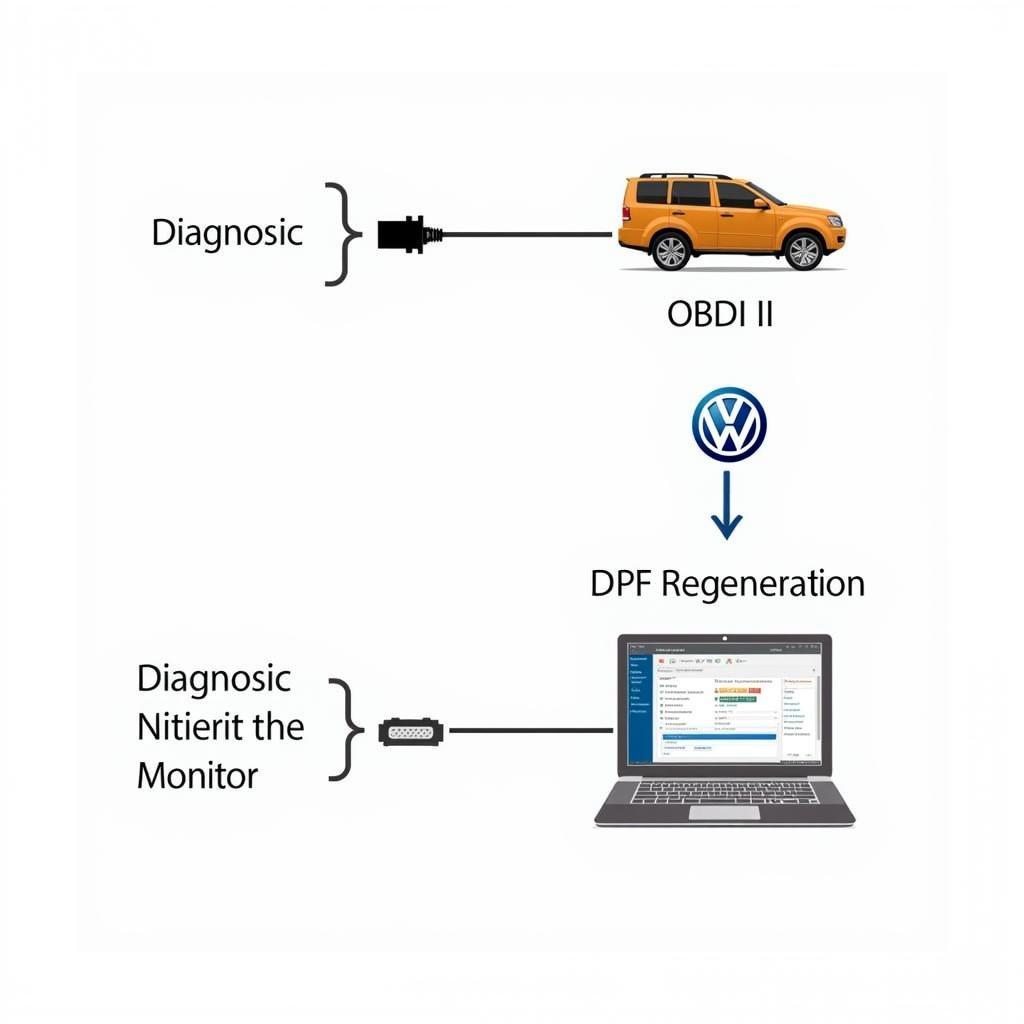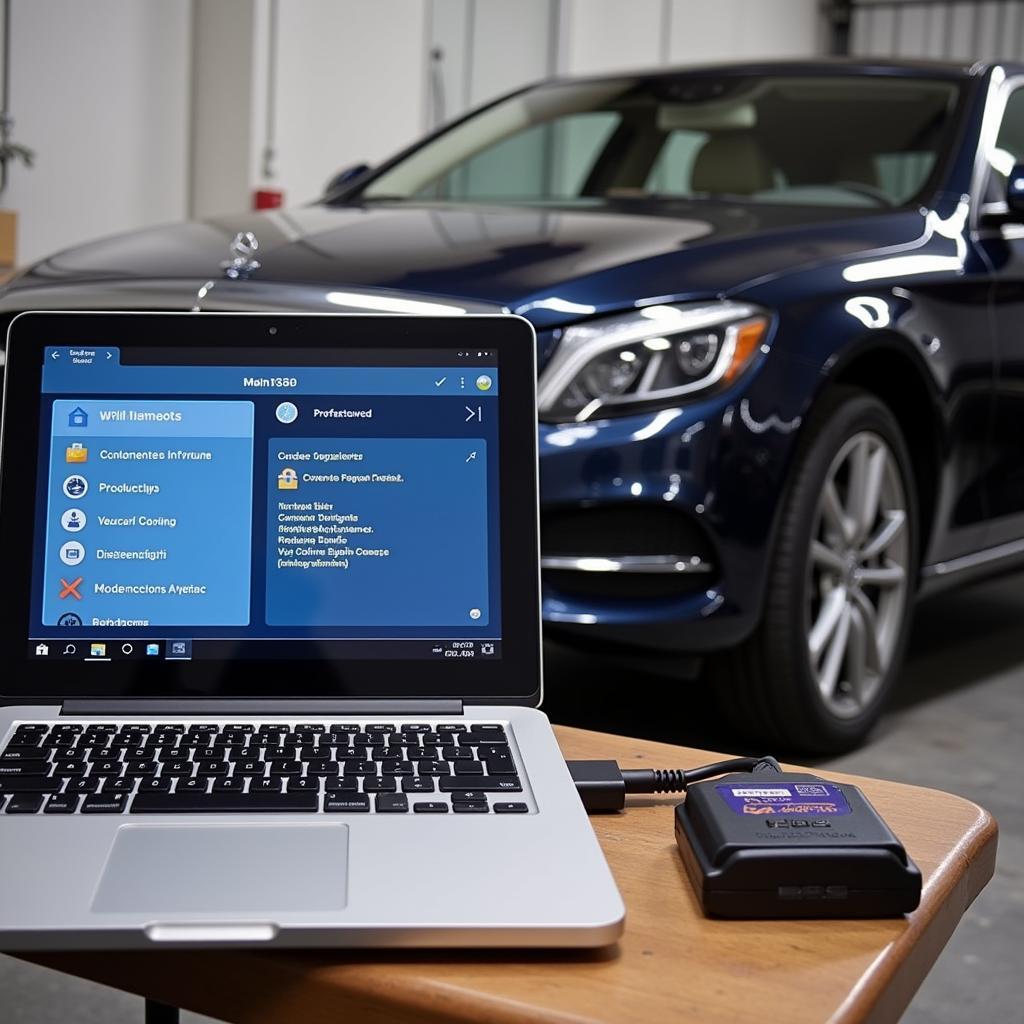ABS coding with VCDS is a powerful technique that allows you to diagnose, troubleshoot, and customize the Anti-lock Braking System (ABS) in your vehicle. Whether you’re a car owner, a mechanic, or an automotive technician, understanding this process can save you time and money. Learn how to leverage VCDS for precise ABS module coding and unlock the full potential of your vehicle’s braking system. For more specific information, explore our guide on vcds abs coding.
Understanding the Importance of ABS Coding
The ABS module is a critical component responsible for preventing wheel lockup during braking, ensuring stability and control. ABS coding allows you to tailor the ABS module’s behavior to specific vehicle configurations, such as tire size, brake type, and even driving style. Correct ABS coding is essential for optimal braking performance and safety.
Common Scenarios Requiring ABS Coding
Several situations may require ABS coding, including:
- Replacing the ABS module
- Changing tire sizes
- Upgrading brake components
- Addressing specific ABS fault codes like vcds 01309
- Customizing ABS behavior for specific driving conditions
“Accurate ABS coding is paramount for safety and performance,” says automotive expert, John Miller, ASE Certified Master Technician. “Using VCDS allows for precise adjustments and eliminates guesswork.”
Step-by-Step Guide to ABS Coding with VCDS
Using VCDS for ABS coding is a straightforward process, but requires careful attention to detail. Here’s a step-by-step guide:
- Connect your VCDS interface to the vehicle’s OBD-II port.
- Turn the ignition on.
- Launch the VCDS software on your computer.
- Select the “Select Control Module” option.
- Choose “ABS Brakes.”
- Navigate to the “Coding” function.
- Enter the correct coding for your vehicle. You can find this information in your vehicle’s service manual or online databases. Be sure to check out our other resources on abs module coding vcds.
- Click “Do It!” to apply the coding.
- Verify the coding by checking the ABS module’s measuring blocks.
 VCDS ABS Coding Process
VCDS ABS Coding Process
What if I Enter the Wrong Coding?
Entering the wrong coding can lead to ABS malfunctions or even complete system failure. It’s crucial to double-check the coding before applying it. If you’re unsure, consult a qualified technician. Understanding your vehicle’s specific battery technology, like information found in our article about vw vcds battery technology, can be relevant in some coding procedures.
Advanced ABS Coding Techniques with VCDS
For more experienced users, VCDS offers advanced coding options for customizing ABS behavior:
- Adjusting brake pressure distribution
- Modifying wheel speed thresholds
- Enabling or disabling specific ABS functions
“With the right knowledge, VCDS unlocks a whole new level of control over your vehicle’s ABS,” says Sarah Chen, Lead Diagnostics Engineer at a leading automotive research facility.
 Advanced VCDS ABS Coding
Advanced VCDS ABS Coding
Choosing the Right VCDS Interface
Choosing the correct VCDS interface is important for successful ABS coding. The vcds hex-v2 pro usb is a reliable and popular choice that offers full compatibility with a wide range of Volkswagen, Audi, Seat, and Skoda vehicles.
 VCDS HEX-V2 Pro USB Interface
VCDS HEX-V2 Pro USB Interface
Conclusion
Mastering ABS coding with VCDS empowers you to optimize your vehicle’s braking performance and safety. By understanding the coding process and utilizing the advanced features of VCDS, you can achieve precise control over your ABS system and tailor it to your specific needs. Remember, accurate abs coding vcds is essential for optimal braking performance.
FAQ
- What is VCDS? VCDS is a diagnostic software used for Volkswagen, Audi, Seat, and Skoda vehicles.
- Why is ABS coding important? ABS coding ensures the ABS system functions correctly with the specific configuration of your vehicle.
- Where can I find the correct ABS coding for my car? Your vehicle’s service manual or online databases.
- Is it safe to perform ABS coding myself? Yes, if you follow the correct procedures and understand the risks.
- What should I do if I encounter an error during ABS coding? Consult a qualified technician.
- Can VCDS be used for other diagnostic tasks? Yes, VCDS can be used for a wide range of diagnostic and programming functions.
- What are the benefits of using a professional-grade VCDS interface like the HEX-V2 Pro? Reliability, full compatibility, and access to advanced features.
Common Scenarios and Questions
- Scenario: ABS light is on after changing tire size. Solution: Perform ABS coding to adapt the system to the new tire size.
- Question: Can I code my ABS to be more aggressive? Answer: Yes, within certain limits, you can adjust parameters like brake pressure distribution.
Further Exploration
Check out these other helpful resources on our website: “Troubleshooting Common ABS Issues” and “Understanding Your Car’s Braking System.”
Need help with your ABS coding? Contact us via Whatsapp: +1 (641) 206-8880, Email: CARDIAGTECH[email protected], or visit us at 276 Reock St, City of Orange, NJ 07050, United States. We offer 24/7 customer support.


